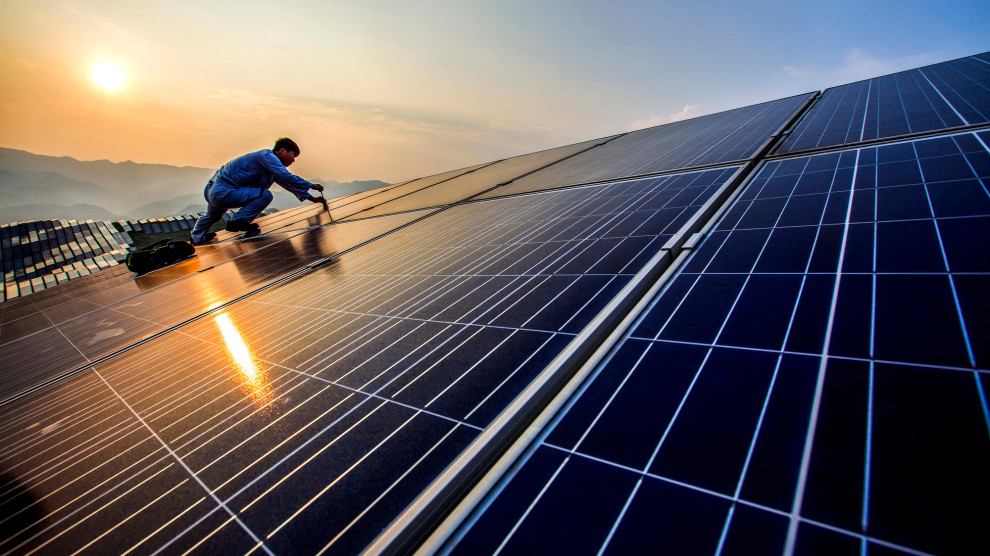
Is the clean energy revolution coming from China?
Beijing has a number of different incentives to make a strong shift to renewable-energy sources. With the words of the environmental journalist Beth Gardiner, three are the main reasons to believe China is heading towards a renewable energy boom: it has atrocious air pollution, it fears climate change, and it wants to be a “manufacturing monster” in renewables too.
After years of breakneck industrialisation, accompanied by unspoken rising environmental crisis, Chinese leaders have finally decide to try to solve the country’s air quality crisis. Such a move will possibly, not only save China up to the equivalent of €250 billion a year – this is how much air pollution alone may cost to the country according to a joint study conducted by the World Bank and the Chinese government – but could also make it become a new important player in the energy and resource sector.
Worries for climate changes that could devastate Chinese coasts and their megalopolis, forced China’s leaders to find new green solutions. Against this background, about a decade ago different measures have been put in place to facilitate the process: local government provided land almost for free, banks offered loans at very low interest rates, and sometimes government agencies directly helped companies.
Beijing manufacturing has made solar cells more affordable and cost-competitive with electricity from fossil fuels, in so doing boosting a sector that has already disrupted global electricity generation. Chinese solar panels are an affordable and viable option for different countries. At home, it is estimated that China is installing a new wind turbine or a number of solar panels able to cover a soccer field every hour.
China aims now to rely on renewable sources for the 20 percent of its energy consumption by 2030. At the beginning of the year, Beijing announced that it would invest €300 billion in renewable energy by 2020 and scrap plans to build 85 coal-fired power plants. In accord, the main national industrial policy, Made in China 2025, prompts sustainable research and development spending, and the One Belt One Road initiative is funding clean-energy projects across Asia, Africa and Europe, also pushing countries to buy from Chinese companies.
 China will not arguably become a champion in fighting climate change any time soon, as it is still the world’s larger polluter, and its problems are likely to grow as more Chinese gain access to cars and higher quality of life. However, in March, authorities announced that China was already surpassing its goals for energy efficiency, carbon intensity, and the share of clean energy sources. In July, the National Energy Administration – China’s energy regulator – introduced new measures to fight its reliance on coal.
China will not arguably become a champion in fighting climate change any time soon, as it is still the world’s larger polluter, and its problems are likely to grow as more Chinese gain access to cars and higher quality of life. However, in March, authorities announced that China was already surpassing its goals for energy efficiency, carbon intensity, and the share of clean energy sources. In July, the National Energy Administration – China’s energy regulator – introduced new measures to fight its reliance on coal.
A couple of interesting experiments were also conducted around the country. At the beginning of summer, the whole province of Qinghai, with a population of 5.8 million people, ran for one week exclusively on renewable energy, including solar, wind, and hydropower. This was part of a trial by the State Grid Corporation of China to test the viability of relying on renewables long-term. In Liulong, Guangdong province, the world’s largest floating solar project was built on abandoned coal mines, providing electricity to the most part of a nearby city and likely to be expanded.
These trends suggest China is undergoing an energy transformation, led by investments in cutting-edge technology and resulting in falling cost of renewable energies. Solar panels are a good example of how China’s technological expertise can make it the partner for power-hugry countries. Moreover, China may prove able to capitalize on the leadership vacuum left by the US, which affirmed it will leave the Paris Climate Agreement. Critics would say that the clean-energy shift is driven more by economic advantage, national security and political stability reasons, rather than a commitment to saving the planet. However, the country has been making giant strides toward a more sustainable growth.




